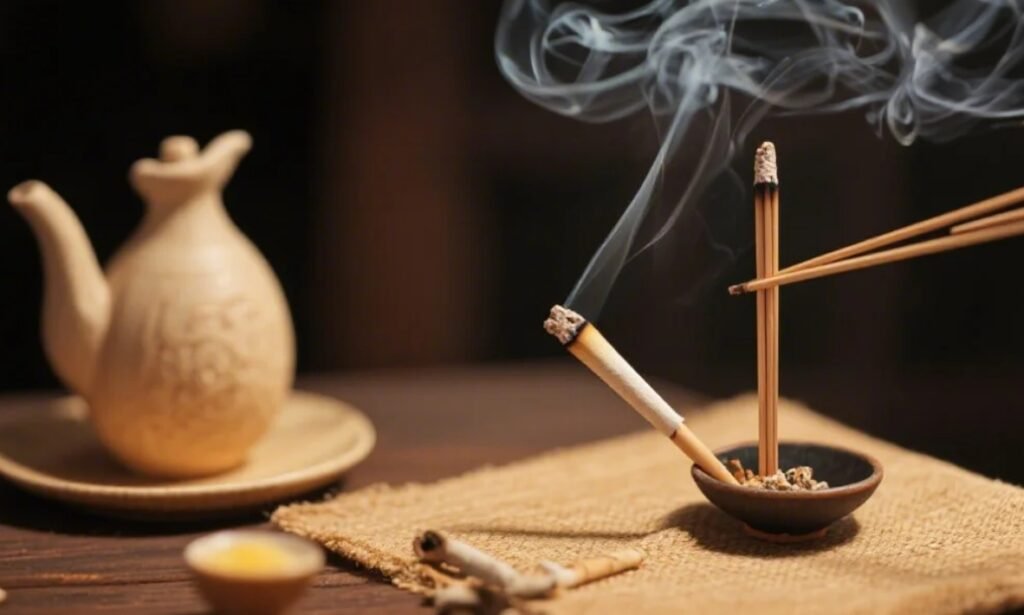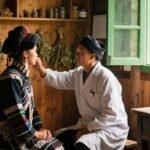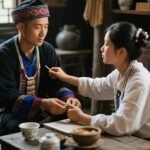Chongdangge (Bone Bi)
Overview
In Miao medicine, bone bi is called Chongdangge, referring to diseases where the affected bone structure is longer than normal bone structure, equivalent to diseases like osteophytes.
In Traditional Chinese Medicine (TCM), bone bi refers to a condition where the six evils (wind, cold, damp, heat) invade the joints and bones, causing blockage of the meridians and disruption of qi and blood circulation, leading to heavy, painful joints, and even joint swelling and deformation. It can also occur due to deficiencies in qi and blood, with the invasion of phlegm-dampness and cold-wet evils, which attach to the joints. This condition is often caused by external wind, cold, and dampness, excessive physical strain, blood stasis blocking the meridians, phlegm-damp internal blockages, and kidney and liver deficiencies.
In Western medicine, conditions like rheumatoid arthritis, osteophytes, sciatica, ankylosing spondylitis, degenerative joint disease, gout, and similar diseases with bone bi as the main symptom can be treated with similar methods to those described here.
Symptoms in Miao Medicine
Chongdangge is classified as a minor disease, divided into two subcategories: heat-type bone overgrowth and cold-type bone overgrowth.
Causes
Phlegm-dampness, wind, cold, and damp evils invade the joints, leading to joint swelling and pain, and heaviness in the limbs. Phlegm-dampness obstructs qi and blood, and cold dampness causes blood stagnation, leading to pain and swelling. Wind and cold lead to stiffness, difficulty in movement, and cold pain. Over time, the body may lose nourishment and moisture in the joints due to aging or excessive strain, leading to degeneration and the development of bone bi.
Pathogenesis
Wind, cold, and dampness, combined with phlegm-dampness, invade the body and obstruct the flow of qi and blood in the meridians, leading to joint stiffness and swelling. Blood and qi stagnation result in joint pain and difficulty in movement. Additionally, aging, physical strain, and loss of joint nourishment result in degeneration of the bones and joints.

Diagnosis
Clinical Features: Acute or chronic joint pain, difficulty bending or straightening the joints, and limited function, often accompanied by joint swelling or deformity.
History: Often preceded by cold exposure, humidity, or trauma.
Commonly Affected Population: The elderly, or individuals with prolonged physical strain or excessive weight-bearing.
Diagnostic Tests
X-ray examination of the affected area, immune function tests, endocrine function tests, and bone marrow examination can assist in diagnosis.
Differential Diagnosis
Gayi Anmai (Wei Syndrome)
Gayi Anmai is caused by external toxic evils, traumatic injury, congenital weakness, or improper medication, resulting in reduced joint movement, muscle atrophy, slowness, weakness, and even paralysis. Chongdangge is caused by the invasion of phlegm-dampness, wind, cold, and damp evils, or excessive joint wear due to aging, leading to bone overgrowth and joint swelling and pain.
The main difference is that Gayi Anmai involves muscle weakness or atrophy without pain, while Chongdangge is characterized by joint pain, limited movement, heaviness, and joint swelling. In severe cases, joint deformation and activity disorders may occur.
Clinically, there are cases with both muscle weakness and joint pain, which is called Wei Bi and should be treated based on its causes and mechanisms.
Treatment by Pattern
Heat-Type Bone Overgrowth
Symptoms: Limbs feel heavy and weak, joints burn with intense pain and numbness; movement is limited.
Approach: Tonify the kidneys, promote blood circulation, and remove blood stasis.
Herbal Prescription:
Szechuan lovage rhizome, chuan xiong, 20 g
Notopterygium root, qiang huo, 15 g
Clematis root, wei ling xian, 15 g
Achyranthes root, huai niu xi, 10 g
Coix seed, yi yi ren, 20 g
Mulberry twig, sang zhi, 10 g
Ground beetle, tu bie chong, 20 g
Prepare as a decoction and drink the strained liquid.
Cold-Type Bone Overgrowth
Symptoms: Joint pain aggravated by cold; stiffness and numbness; difficulty bending or straightening; skin over joints appears normal in color.
Approach: Dispel wind-dampness, open the meridians, and relieve pain.
Herbal Prescription:
Clematis root, wei ling xian, 20 g
Coix seed, yi yi ren, 15 g
Achyranthes root, huai niu xi, 20 g
Eucommia bark, du zhong, 15 g
Acanthopanax bark, wu jia pi, 15 g
Spatholobus stem, ji xue teng, 20 g
Prepare as a decoction and drink the strained liquid.
Prevention and Care
Moderate exercise and maintaining good posture; reduce injury and exposure to dampness in the affected area; weight reduction.
For knee strain, avoid excessive stair climbing to (helps maintain) further damage to the knee joint.
Ensure proper nutrition and avoid spicy, stimulating foods; refrain from smoking and drinking alcohol.
Prevent exposure to wind and cold.
Maintain a positive mental attitude and manage emotional stress.
Conclusion
In Miao medicine, Chongdangge is caused by the invasion of phlegm-dampness, wind, cold, and damp evils into the joints, leading to pain, swelling, and stiffness. It can also result from aging and overuse of joints. The condition is often treated with herbs that tonify the kidneys, promote blood circulation, and relieve pain, with the goal of improving circulation, reducing joint swelling, and enhancing joint function.



Leave a Reply